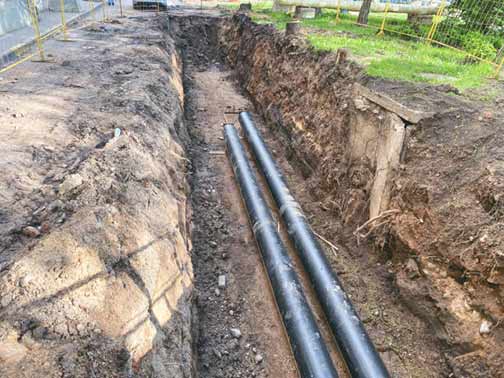
Older homes have an allure that is not found in modern homes. Their quaint designs conjure nostalgic memories of times past when life was much simpler. But in addition to their charm, older homes also come with a unique set of challenges that owners of modern homes do not have to deal with.
Because their structures are aged and fragile, older homes require careful handling and more frequent maintenance. A common source of concern for owners of older homes is the sewer line, according to Librett Real Estate Group. Due to wear and tear, sewer lines in older homes suffer a lot of inefficiencies and are often prone to leaks, clog and crack.
Part of the reason for these problems is that the pipes in older sewer systems are usually from materials that degrade easily; such as clay, cast iron, or Orangeburg. Unlike modern pipe materials, these older materials are not very resilient. Some of their common issues include:
Tree root infiltration
Tree root infiltration is a common problem with sewer lines regardless of their materials. However, clay and metal pipes are particularly susceptible to tree root invasion because these materials are bio-degradable, making it easier for tree roots to penetrate them.
Severe corrosion
Metal pipes are also vulnerable to corrosion because they rust. Because the line is exposed to moisture from the surrounding soil and the water that flows inside it, this corrosion happens on both the inside and the outside of the pipes. That accelerates the demise of the sewer line.
Sewer line collapse
Sewer line collapse as a result of corrosion is a common problem in older homes. Most of the time, the collapse is partial – only a section of the line caves in – leading to an increase in the frequency of drain problems in the older home – clogged drains, bad odors and sewer line backups.
Damaged sewer lines can also endanger the other structures in an older home. That is because the sewer line issues may not restrict their impact on the drainage system alone. Sometimes, the problems ripple outwards, affecting their walls, flooring and foundation.
How do you fix the sewer line issues in your historic home?
Dealing with sewer line issues in an older home
Solving the sewer line problems of older houses requires a balance between the preservation of the home’s historic features and the modernization of the problematic areas. It is essential to use a tailored approach that addresses the problems without losing sight of the home’s uniqueness.
Here are the recommended steps for fixing the sewer line issues in your older home:
Inspect the sewer line to identify the problem
To minimize cost and preserve as much of the original design as possible, repair efforts must be precise. Start with an in-depth evaluation of the sewer line to identify the problem, its cause and the extent of the issue. Try to avoid quick-fix solutions.
Upgrade and modernize
While it is a good idea to use the same materials as were originally used in the line, it doesn’t make sense. Older pipe materials decay very fast, and the entire repair process may soon have to be repeated. That is costly and exposes the home to more danger.
Prioritize non-invasive solutions
As much as possible, you want to leave the home’s features as they are. Non-invasive sewer line replacement technologies like pipe bursting or cured-in-place pipe (CIPP) lining let you replace damaged sewer lines with minimal disruption to the property and surrounding landscaping.
Adopt eco-friendly practices
By incorporating environmental sustainability into the home’s drainage system, you reduce the burden on the sewer system. For example, rainwater harvesting systems and biodegradable (septic-safe) drain management products help to protect the sewer line and prolong its life.
Ensure compliance with building codes
It is essential to upgrade your sewer line in compliance with current regulations and standards. That will not only maximize the functionality of the sewer line but will ensure its longevity. Furthermore, it will help you avoid future problems when trying to sell or renovate your property.
Involve the community
Since many older homes share infrastructure with a community that includes other old homes, it is essential to work with your neighbors when repairing your sewer line. If possible, the community can pool knowledge and resources to jointly renovate the shared portions of the sewer system.
Inspect and maintain regularly
Older homes need more attention than modern homes because of the need to preserve their old-fashioned aesthetics. Also, problems in older homes tend to escalate very quickly. That is why you need a plan for routine inspection and maintenance of the sewer line.
Finally, seek out the expertise of a professional plumber before you decide on any of the above steps. Preferably, this should be a plumber familiar with the unique issues of sewer systems in older homes. An experienced plumber will help you avoid temporary fixes that will cost you in the future.

